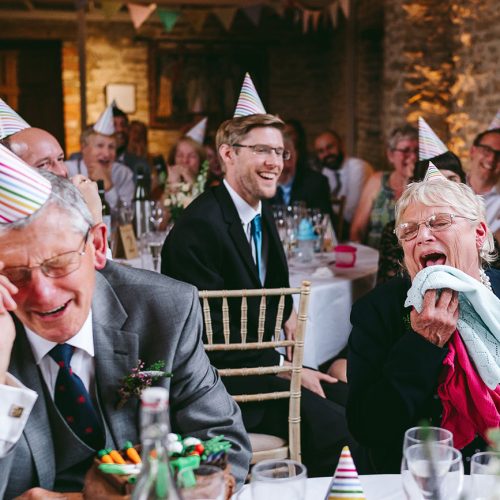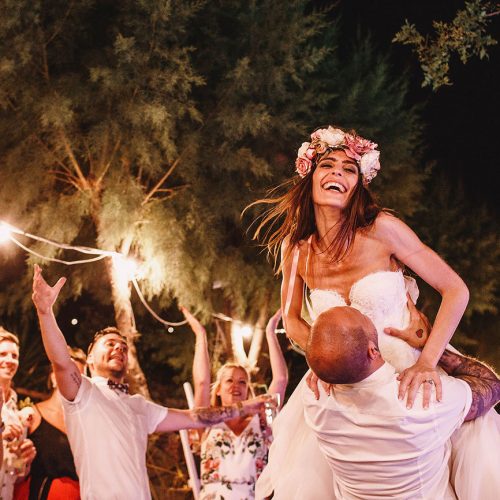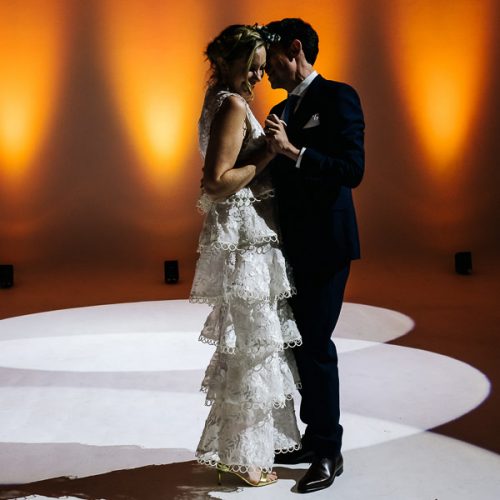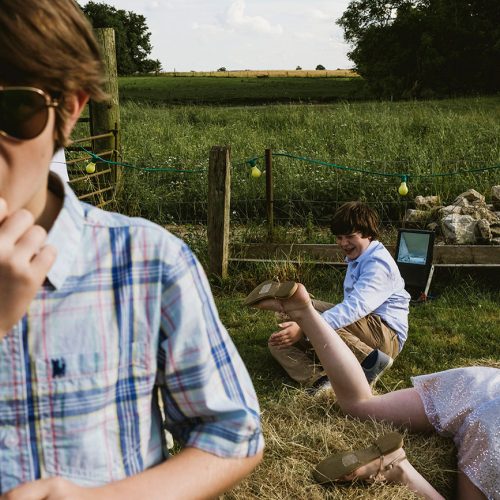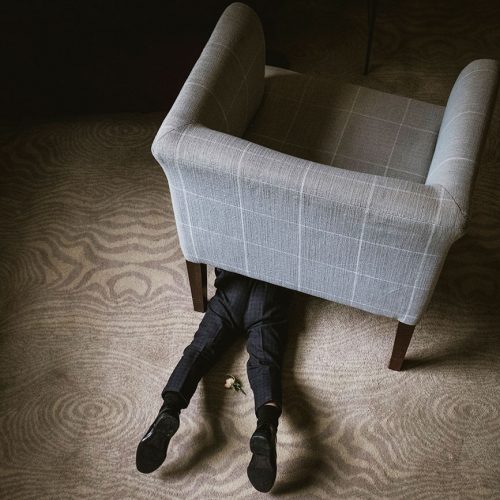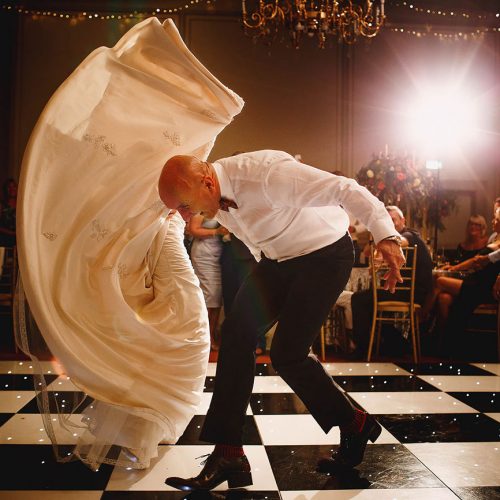This Is How: ‘Shooting In Extreme Low Light And High Temperatures’ by Juan Carlos Calderon
It’s an honour to have Juan Carlos Calderon of Car & Mel Photography on the site today, taking us behind the scenes of this dramatic capture. Juan shares great insights, such as the challenges of shooting in extremely low light levels, trying not to get burnt (!), and the importance of shooting things differently…a fantastic read!
How many of us wedding photographers have encountered a big challenge during an event? I’d say, without a doubt: Every. Single. Time. The rush, the excitement, the craziness can be overwhelming sometimes, but most of the time is really fun. But being a destination wedding photographer located in sunny Mexico, things can get a little bit “interesting“.
Sometimes things get hectic, like when you get to shoot in crowded tiny hotel rooms, or you run from the bride’s room to the groom’s room on the other side of the IMMENSE resort carrying all your gear. Sometimes you have to rush from the getting ready at the hotel to the ceremony at a church, garden, gazebo or beach, in a bright sunny afternoon, because the wedding planner has to set up another wedding, just after the one you are shooting. SMH.
But that’s not the real challenge… that’s business as usual. The real trick is to work like this at 90 degrees with 90% humidity. Or sometimes, for instance, the challenge is to light your couple at night during their first dance, at a secluded beach, in pitch black darkness, with no walls to bounce the light from the flashes.
This (and more) makes it a dream to shoot in destinations like Puerto Vallarta, Mexico. And shooting a wedding in a location like a beach makes things a little bit more challenging, to say the least. And that brings me here, to how I shot this moment:
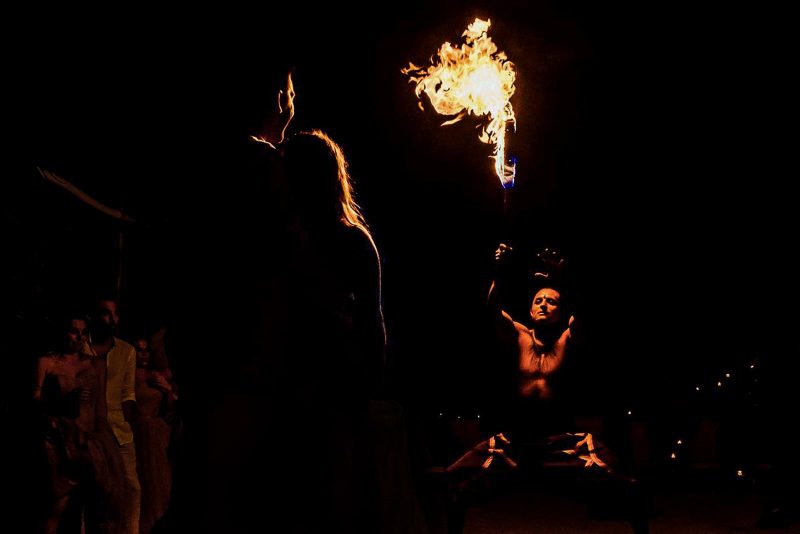
This particular location is called Las Caletas and is very unique in many ways, for instance, it’s a secluded beach only approachable by boat. That already says a lot about how far away from the civilization is.
It used to be the home and hide away of the famous and equally secluded, two times Oscar winner, film director John Huston. Creator of classics like: The Maltese Falcon (1941), The Treasure of the Sierra Madre (1948), The African Queen (1951) and others. He was also the father of Anjelica Huston if you want to know. Well, he lived in this place to get away from the craziness and madness of civilization. Now they make weddings there. How about that?
Anyway, in this venue almost everything happens at the beach: the ceremony, the reception, the family portraits and the party. The dancing area is arranged with a wooden platform covered in a sort of dark coloured carpet so it definitely bounces no light.
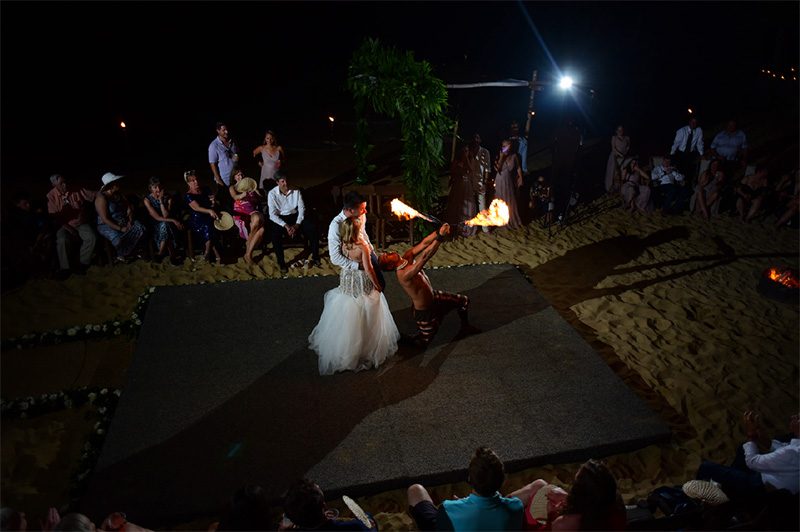
For me, the best possible way to light this situation is having two stands with flashes opposed from the corners. Sometimes the Magmod grids work perfectly fine if the couple doesn’t move too much from the center of the platform. In this case I had no grids. And when shooting this kind of event with fire dancers you have to be very careful not to get too close to the performers for obvious reasons, right? But particularly because of the fire lamps ejecting hot kerosene that can spoil the lenses, the cameras or an eye. Gladly, no one got hurt… 🙂
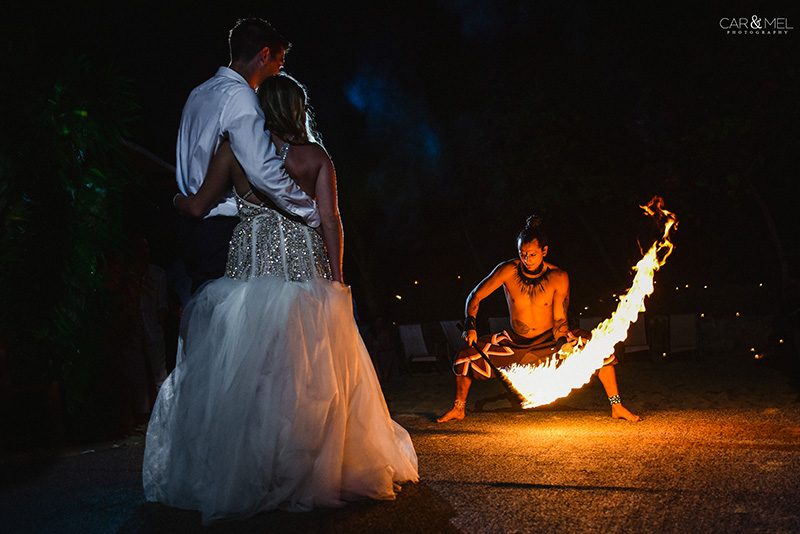
So when you shoot a wedding in the same venue with the same circumstances for many different occasions, you’ll probably be asking yourself what do you need to do in order to be more creative, if that happens, then you definitely should listen to your inner voice. In this case mine told me that instead of dragging the shutter and making things blurry, I should keep the speed at 1/200 but should close the aperture (so I could have my couple, the dancer and some of the guests in an effective focus range, keep the ISO at minimum possible (800 or lower because the flame was very bright at some points), I should press the flash-off assigned button on my Nikon D750 and make sure I would press the shutter button at the exact moment when nobody was moving.
After a handful of shots I got the moment I wanted. No flash, just making sure I had the right exposure and trusting my camera’s sensor.
Body: Nikon D750
Lens: Nikkor 24mm F/2.8 D
You can see more of Juan’s work on his website, or his This is Reportage profile.
If you enjoyed this post, you’ll enjoy going through the many more ‘This is How…’ pieces by our TiR members.
